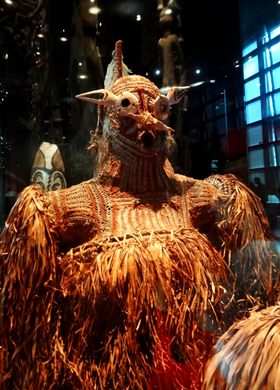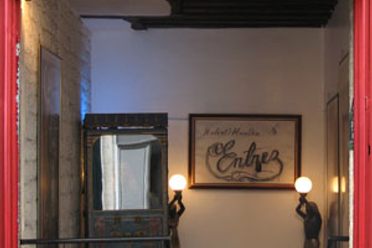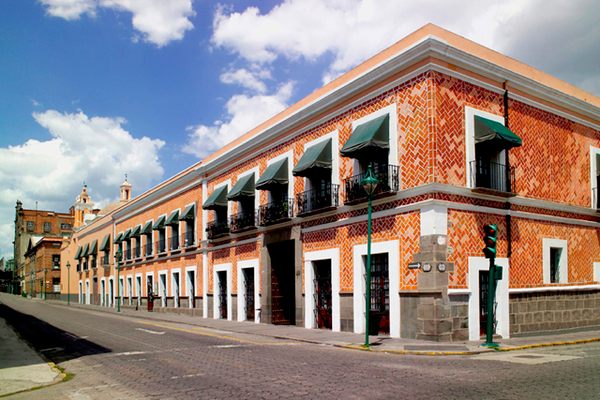Musée du quai Branly (Quai Branly Museum)
This Parisian gem is one of the most incredible ethnographic museums in the world.
Broken up into four sections—Africa, Asia, the Americas, and Oceania—Paris’s Quai Branly Museum (Musée du quai Branly) displays a wealth of artifacts highlighting indigenous art from non-Western civilizations around the world. Taking a stroll through the remarkable cultural collection, it’s easy to see why these ancient masterpieces so inspired the great European artists of the 20th century.
The museum displays some 3,500 pieces at a time, from a total collection of 450,000 artifacts. In the Oceania gallery, you will find among the many treasures ferocious looking crocodile-headed wooden prows that once graced the canoes of Papua New Guinea tribes, or be struck by the monolithic solemnity of an Easter Island Rapa Nui sculpture.
Moving to the Africa gallery you may be enchanted by the sublime visages of hundreds of masks made by tribes from all over the continent, which envelop you in the sorrow, joy, dread or awe of their craftsmen. Or your eye may instead be drawn to the traditional tribal jewelry worn by generations of Algerian brides on their wedding day.
In the Asian gallery, you might be charmed by the magic of Indonesian shadow puppets; in the Americas, you’ll find a chilling stone sculpture of the Mayan death god Ah Puch that lay hidden in a Guatemalan jungle for centuries. All of these treasures speak of the rich veins of mythology and the thousands of ways that love, fear, hope, death, nature, and the cosmos have been conceptualized by humans around the world.
Many of the artifacts from Africa and Oceania were once displayed in galleries of the Trocadéro palace where they were visited by the likes of Pablo Picasso, Amedeo Modigliani, and Paul Gauguin. These artists were so inspired by what they saw that they began to critique, question, and revolutionize the stagnating concepts of Western art that dominated the late 19th and early 20th centuries, and search for a deeper understanding of what it means to be human.
The Quai Branly Museum is not without its controversy, as many of the pieces displayed were collected (and sometimes stolen) between the 18th and 20th centuries during the colonial expansion of France and other European empires. These European powers justified their conquests by asserting that they had a legal and religious right to the land of Indigenous peoples. As such, the museum has been at the heart of the ongoing debate over the “decolonization” of Western museums. In the wake of the discussion, the Quai Branly has made some earnest efforts to set historic wrongs right by returning many artifacts that hold religious significance to their countries of origin.
Know Before You Go
Like most of the Parisian museums, the Quai Branly is large and there is a lot to see. It's best to set aside at least a couple of hours for your visit in order to take everything in—or better yet, to visit multiple times. The museum is located in the 7th arrondissement on the bank of the Seine, just a 10-minute walk from the Eiffel Tower.
Community Contributors
Added by
Edited by
Plan Your Trip
The Atlas Obscura Podcast is Back!


















































Follow us on Twitter to get the latest on the world's hidden wonders.
Like us on Facebook to get the latest on the world's hidden wonders.
Follow us on Twitter Like us on Facebook